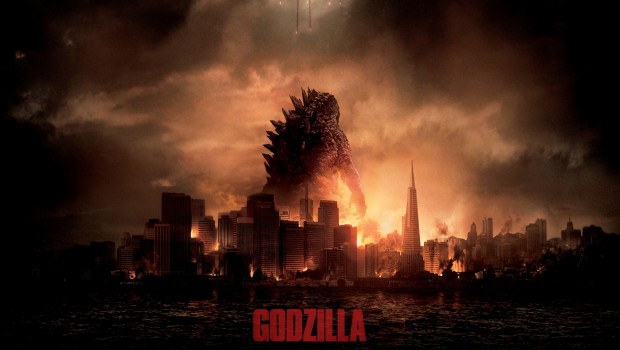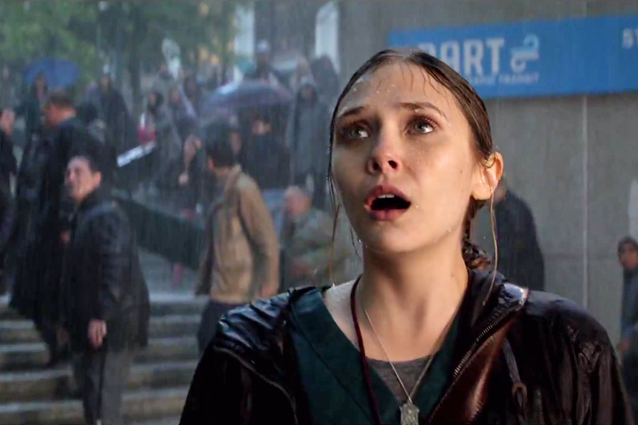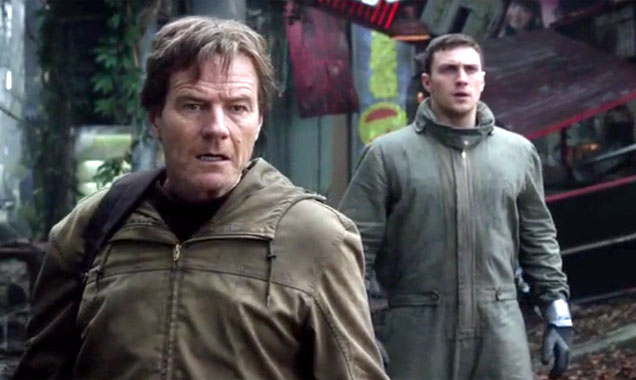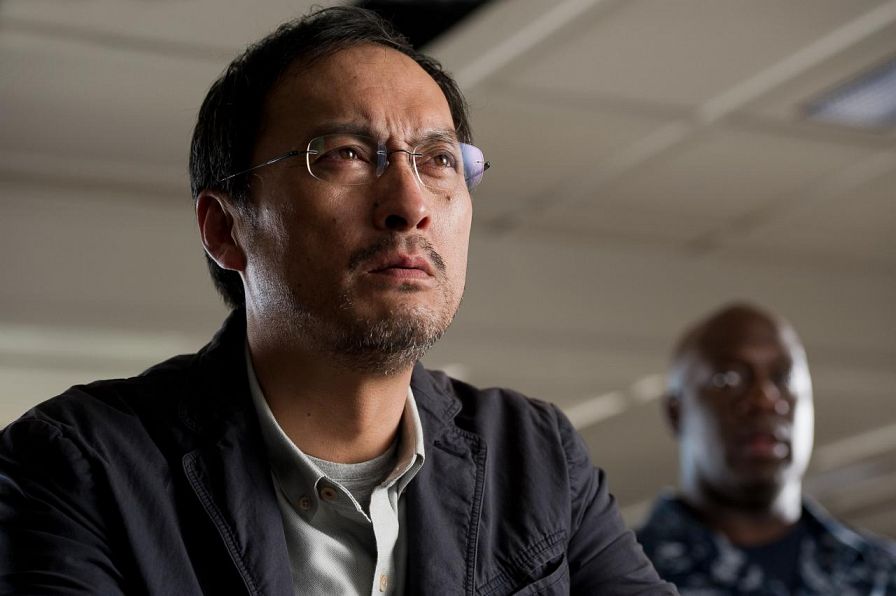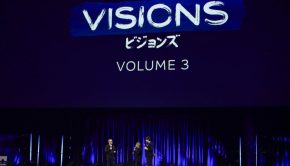Godzilla (3D) – Film Review
Reviewed by Damien Straker on May 15th, 2014
Roadshow presents a film by Gareth Edwards
Producers: Thomas Tull, Jon Jashni, Mary Parent and Brian Rogers
Written by Max Borenstein
Starring: Aaron Taylor-Johnson, Ken Watanabe, Elizabeth Olsen, Sally Hawkins, David Strathairn and Bryan Cranston
Music: Alexandre Desplat
Cinematography: Seamus McGarvey
Editing: Bob Ducsay
Running Time: 123 minutes
Rating: M
Release Date: May 15th, 2014
Godzilla squanders the potential of its fantastic cast in favour of huge set pieces and special effects. This is the second film by English filmmaker Gareth Edwards, following his impressive debut Monsters (2010), a low budget science fiction thriller set in quarantined Mexico. It had the brains to keep a central relationship driving its story and refreshingly held the aliens and the destruction in the background to forge a strong political critique. Godzilla starts a bit like this but then continually trades its characters and humanity for action that isn’t involving or exciting. In fact, Godzilla grows dull and tiresome when it is apparent that there isn’t someone to hinge our emotions onto. It is an extraordinary feat given the first rate cast, including Bryan Cranston, Aaron-Taylor Johnson, Sally Hawkins, Ken Watanabe, Elizabeth Olsen and David Strathairn, each of whom only has a subpar script by Max Borenstein to work under.
The timing of the film is interesting, arriving after the Fukushima nuclear power plant disaster in Japan, giving the film some contextual relevancy. Godzilla has always been synonymous with nuclear power and warfare. The ‘king of monsters’ was first conceived by film producer Tomoyuki Tanaka in the 1950s as a response to the Second World War and the bombing of Hiroshima as a way of visualising the fear of future nuclear strikes. From then Godzilla became an enormous cultural staple in Japan, belonging to a group of creatures called “Kaiju” which in Japanese means “strange creature”. The name Godzilla (or Gojira in Japanese) is a combination of “gorira” (gorilla) and “kujira” (whale). According to Wikizilla Godzilla is a “daikaiju” which stresses the power of the monsters. There have been twenty-eight Japanese films about Godzilla or Gojira, the first of which was filmed in 1954 by Ishiro Honda. It isn’t a very good film but in that era, when a nuclear war seemed imminent, it struck a chord with people. This was also long before advanced CGI so Godzilla was made from a monster suit that was so hot and heavy that it required a valve to release the sweat of the actor inside.
Unfortunately, this modern film has less personality than that suit. What was the intention of hiring Gareth Edwards if the film was going to be so standardised? As much as I enjoyed Monsters it was the only his first film but impressionable enough for someone to grant him a huge budget of $160 million dollars for this project. It was always doubtful he’d ever replicate the same achievement again but he did he have to make this film so self-serious? Like many blockbusters today, everything hinges on having a gloomy, sullen mood (it’s called “gritty”) and widely shot exteriors that are dark too but sometimes handsomely shot and sprinkled with foggy smoke effects. The people swallowed up in these enormous spaces aren’t interesting in the slightest and entirely humourless. They are their drawn as little more than stereotypes and are only identifiable because of the heavyweights playing them. There is a conspiracist, a young military buck, a doting wife, a square jawed navy man and a pair of scientists. The conspiracist is Joe (Cranston), who vows to unlock a military secret after a death in his family. His son Ford (Johnson) grows up to be a bomb expert in the military and is married to Elle (Olsen). Watanabe and Hawkins play scientists that are keen to examine some unique species under the ground.
After an important central character fades there isn’t a strong presence to guide the narrative. Ford is a one-dimensional indestructible hero with no flaws or backstory and he doesn’t have the opportunity to create any personal conflict with the other characters. All the conflict is provided by the action and destruction and doesn’t allow the actors or the director to impose their own personal imprints. The film seems as derivative as any other creature feature like Pacific Rim or blockbusters devoted to demolishing American cities. The actors are either misdirected or underused. Aaron-Taylor Johnson isn’t charismatic enough to carry the film and Bryan Cranston in his early scenes appears overwrought and slightly off-key. Wantanabe and Hawkins are reduced to spouting scientific exposition, which might make your eyes glaze over, while Elizabeth Olsen, who can be powerful, is barely used until the final quarter. These actors deserved stronger material or at least an experienced hand to lead them.
In the second half of the film these actors and any mawkish family scenes run second to elaborate military operations that aren’t always easy to follow or particularly tense. In Monsters Gareth Edwards critiqued the power of the military and their responses but this film is more conventional in how much time it airs to military hardware. Far more attention in the script has been applied to the backstory of Godzilla’s origins than to the actual plot, which is silly throwaway stuff and comprised mostly of action so that the second and third act blends hazily together and only surprises at the very end. The special effects make big use of motion capture technology, courtesy of Andy Serkis’ company The Imaginarium Studios, but the personalities in films like this shouldn’t be discarded so that we still have someone that we can root for in death defying situations. Godzilla is terribly short on developing interesting characters and as a result it is largely mediocre.
Summary: Godzilla squanders the potential of its fantastic cast in favour of huge set pieces and special effects


